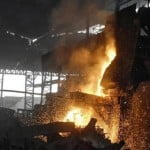
Results of the fiercely fought Assembly elections in Bihar will be out on November 8. Whatever that may be, it can’t be gainsaid that with Nitish Kumar at the helm, the state, for long synonymous with backwardness and maladministration, has forged ahead. Under Kumar’s leadership, the state has seen stronger GDP growth; it has consistently beaten national growth in more recent years, more immune than the nation as a whole to the persistent demand slump in the post-global crisis period. While physical and social infrastructure improvement has lately been visible, the state’s power deficit has reduced sharply in the last two years as the peak availability of power has grown from 1,500 MW in 2010 to about 2,700 MW now.
Of course, per capita electricity consumption remains much lower at 144 kWh compared to the national average of 927 kWh, underlining the need for accelerated capacity augmentation. Though the state’s network of national and state highways have significantly expanded, it continues to be well below national average at 175 km per lakh population compared with national average of 388 km. Despite such weak physical infrastructure, the state has shown some progress in social indicators. There’s a steady decline in infant mortality rate, which is now almost in line with the national average and maternal mortality ratio too has declined considerably, although it still needs to catch with the pan-India average.

[“source -financialexpress”]




